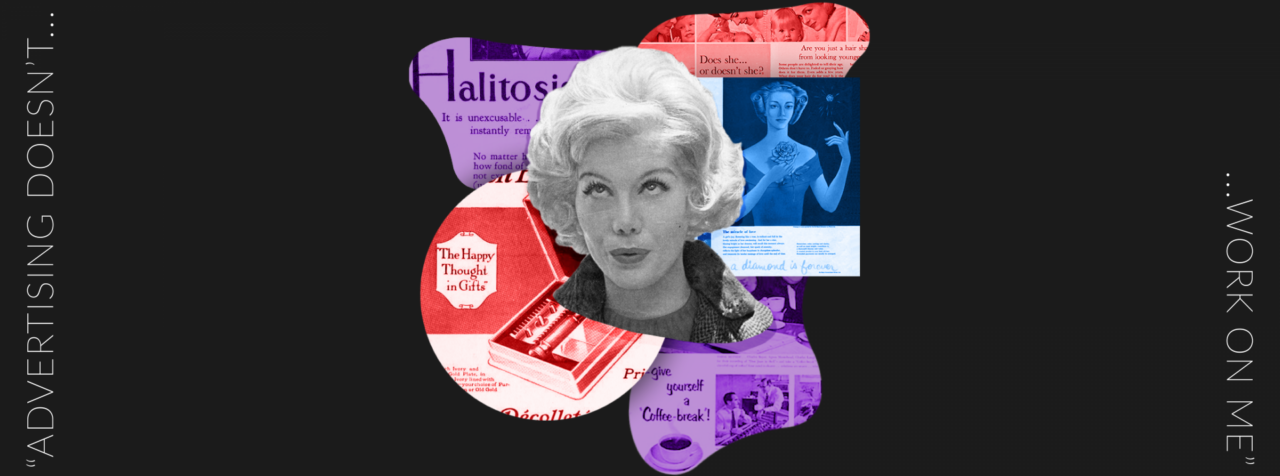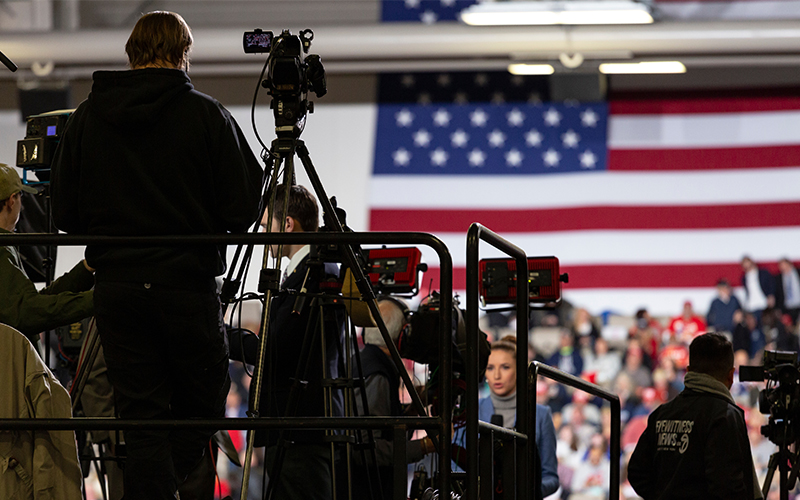“Advertising doesn’t work on me.”
If you work in marketing, you’ve likely heard this line. But is it true? History tells us: Not really. Let’s talk about the ways advertising has worked on us—all of us. Join us on a little trip through time to discover how marketing has changed culture as we know it. (And you’re welcome for the cocktail trivia.)
Pan-American Coffee Bureau gave us coffee breaks.
The coffee break: an office tradition as sacred as printer problems and watercooler talk. But they weren’t part of our culture until 1952 when Pan-American Coffee Bureau ran their iconic “give yourself a coffee-break” campaign. While the copy may not be the smoothest ever written, the idea resonated with audiences. Before long, coffee breaks became so common that they were even used in union negotiations. In 1964, the United Auto Workers Union threatened to go on strike if coffee breaks weren’t written into their contracts. So next time you’re enjoying an iced latte on the clock, you have marketing to thank.
You wear deodorant because of Odorono.
Once upon a time a surgeon created an antiperspirant to keep his hands from getting sweaty during surgery. And then his daughter, Edna Murphey, tried it under her arms and found out it prevented sweat and smell. She started a company, which she named Odorono, and took it to market. After several early road bumps, Murphey teamed up with JWT in 1918 And in 1919, they created an iconic ad campaign, “Within the curve of a woman’s arm,” that convinced women that body odor was the biggest embarrassment they could experience—and that no one would tell them about it. According to the campaign, if women did not use Odorono, they could end up unmarried spinsters (considered a terrible fate at that time).
Even at the time, the campaign was controversial—but it worked. Odorono sales went up 112 percent the following year. Soon other brands in the fledgling industry followed suit, and the deodorant industry as we know it started. Another fun plot twist? Deodorant was originally marketed only towards women, as body odor was considered ‘masculine.’ Many men were hesitant to adopt deodorant because, at the time, they felt it was emasculating. But through tenacity and good marketing, the industry eventually got men on board too. And now, over 100 years later, deodorant is a self-care staple.
Diamonds aren’t really forever—De Beers just told you they were.
From movies to music, the idea that “A Diamond Is Forever” has become one of the most famous lines in pop culture. But did you know it actually started as an ad campaign for NYC jewelry company De Beers? Created in 1948 in response to the decline in diamond sales that started during the Great Depression, the campaign helped make a connection between true love and diamonds. And it sure worked: Diamond rings have since become synonymous with engagement. Not satisfied with its thunderous success, in 1977, De Beers launched yet another campaign that said: “How else could two months’ salary last forever? A diamond is forever. De Beers.” So if you ever wondered where the idea came from that people should propose with a diamond ring worth two months of their salary, now you know.
No, halitosis isn’t worth worrying about. Listerine just convinced you it was.
The overall story of Listerine is fascinating—it all came about when surgeons like Joseph Lister began using antiseptic in surgeries in the 1860s. Eventually, one of the founders of Johnson & Johnson created a version that could be used as mouthwash. He named it Listerine after Dr. Lister. America did start making sure their breath didn’t smell like last night’s dinner, but it wasn’t enough. So Listerine decided to turn it up a notch.
In the 1920s, Gerard Lambert, son of the founder of Lambert Pharmaceutical Company, was on the hunt for inspiration. Eventually he found it in the form of an old medical journal; there it was—the term halitosis. All it really means is “bad breath” in Latin, but since it sounded very official, Listerine adopted it in their marketing. This led to a campaign where, yet again, women were told they’d die spinsters if they didn’t use the product. And yet again, it worked! Listerine’s sales went from around $100K to $4 million in just seven years.
Blondes have more fun because Clairol said so.
“Blondes have more fun” is a phrase so iconic, most of us don’t even know where it came from. It actually originated at a time when hair dye was considered scandalous and only for certain types of ladies. Clairol partnered with iconic copywriter Shirley Polykoff to change America’s perception of hair color and the women who use it.
Polykoff created a campaign that showed clean-cut, family-focused women enjoying their lives with taglines like “Does She…or Doesn’t She?” to show America the true face of hair color. This campaign also included, of course, the ever-enduring phrase “Is it true blondes have more fun?” In the end, this campaign worked incredibly well and set the stage for the hair color freedom we enjoy today.
Women shave because of Gillette and the World Wars.
After Gillette became a household name by providing razors to WWI soldiers, the company decided it wanted an even bigger market share, so they decided it was time to get women into shaving. The history of women’s shaving is a long one. And just like Odorono above, it began with the underarms. The shift in fashion from Victorian modesty to flapper freedom provided Gillette the perfect opportunity to secure a new market. In the same way that Odorono and Listerine told women they’d never marry if they didn’t use their products, Gillette created campaigns to encourage women to avoid the “embarrassment” of body hair.
That explains underarms, but what about women shaving their legs? While several factors ultimately contributed to this cultural expectation, WWII in the 1940s was the major turning point. With nylons no longer readily available due to wartime rationing, Gillette encouraged women to shave their legs so that they could go out barelegged without having to worry about embarrassing leg hair. From that point on, it was a simple journey to where we are today—where not shaving is an anomaly and razors are considered as necessary as deodorant and mouthwash.
While ads for fast food or one-off items may not affect us all that much, marketing has the power to change almost anything about our experience—how we speak, eat, dress, and take the most basic care of ourselves. There are several more examples, but these six are some of the ones that still affect our daily lives the most. And that brings us to the big question—what campaigns are we witnessing now that will have the same impact as those we’ve discussed above?



